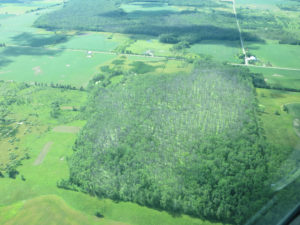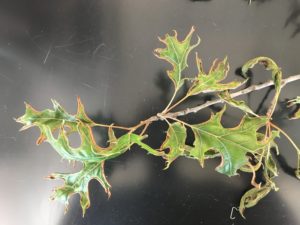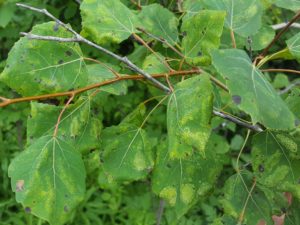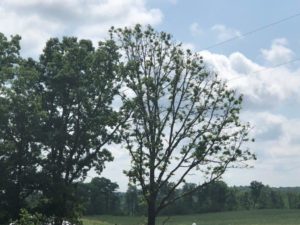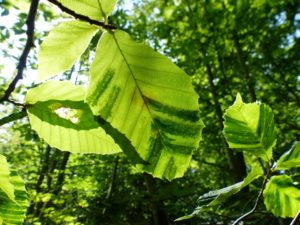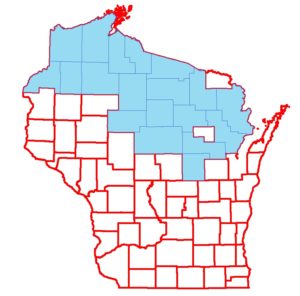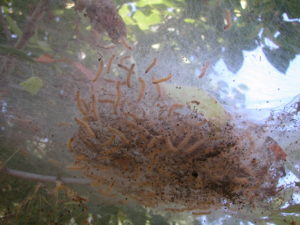By Linda Williams, forest health specialist, Woodruff. Linda.Williams@wisconsin.gov; 920-360-0665
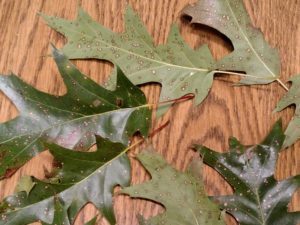
Heavily-spotted oak leaves began to drop in early August. Spots appeared on both the front and back of leaves. Photo: Linda Williams
Last year, Forest Health News published an article about oaks prematurely dropping leaves although they were not infected by the fungal pathogen Ceratocystis fagacearum, the cause of oak wilt disease. Oak trees infected with oak wilt disease in springtime rapidly wilt and drop green leaves in July or August. However, oak wilt disease is not the only reason oak trees prematurely drop leaves. Continue reading “Oak leaves dropping (but not from oak wilt)”

